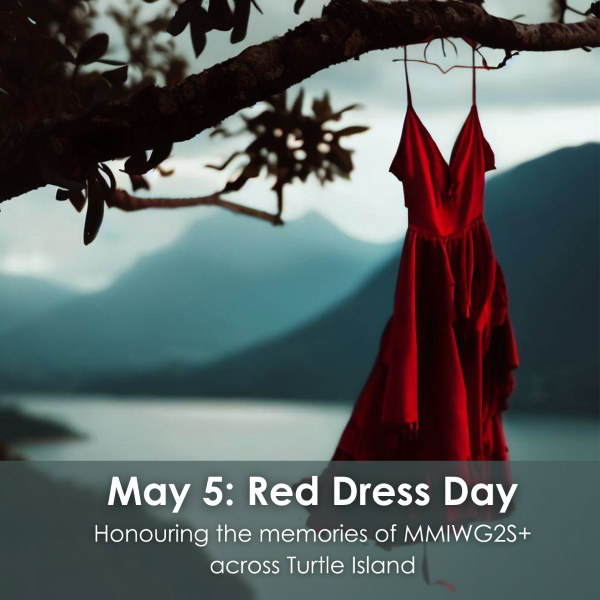About five years after World War II ended, Carol Ann Robideau was growing up in Grand Forks, North Dakota, a young Ojibwe girl born of a Native woman and a non-Native man.
At the age of 2 or 3, she remembers two white women coming to visit her family. They had come to bring donations to the “impoverished Indians.” They offered to take Robideau and her twin brother Tommy out for ice cream. Tommy, a bit on the shy side, stayed home. Carol went along.
Nearly 75 years later, she looks back at this memory as the moment her life changed.
An untold story
While the Murdered and Missing Indigenous Woman cause has received increasing attention in recent years, the situation has been going on for decades with little media attention. Many of the women who survived have remained silent about their captors, further adding to the obscurity of this peculiar phenomenon.
Carol Ann “Dolly” Robideau is one of those women. Spirited away from her mother, twin brother and 11 other siblings around 1949 for reasons unknown, Dolly is one of the luckier ones. She is a survivor.
Her story has gone largely untold, until now. As part of her efforts to assist her nephew, Leonard Peltier, in his quest for justice and freedom, Dolly is telling the story of her abduction and of their reunion.
Searching for her history
Carol Robideau first met her nephew Leonard Peltier on July 12, 2013. She traveled from Fremont, California, to visit him in Coleman Federal Prison in Florida, where he’d been incarcerated since 2011.
What began as a quest for information about her father turned into a crusade to help free her nephew, who was sentenced to two life terms after being convicted of aiding and abetting the murder of two FBI agents in an infamous shootout on the Pine Ridge Reservation in 1975. Many consider Peltier a political prisoner framed by the FBI for the murders and have called for his release.
Carol never met her father, but she knew Leonard remembered him, so she turned to him for information. Her mother met her father Thomas Olson when she worked on his farm. Carol’s second-oldest sibling Ida told her the couple was happy together, always laughing and singing, but Carol remained skeptical as Ida “tended to put a big positive slant on everything she remembered.”
Leonard, never one to mince words, called him a “racist asshole.” Maybe that was why Carol never knew him – her mother being Native American. But Carol barely knew the rest of her family either, because at the age of 2 or 3, she was taken from her home by a white couple, Phillip and Agnes Knight.
“Why did a white woman travel from Minneapolis, Minnesota, to Grand Forks, North Dakota, and return home with a Native American child?” she ponders aloud. While she insists Agnes had no interest in being a mother, she speculates that Phillip may have wanted a girl, though she prefers not to think about why a white man would want to abduct a young Native girl.
Whatever the couple’s reasons were for abducting her, they are lost to time since all of the people involved, save Carol and Leonard, have died.
A different recollection
Through emails and letters, Leonard shared his version of Carol’s story with ICT freelancer Lori Lovely.
He recalled the details of Carol’s disappearance differently than she did. In his early teens at the time, Leonard hung out with Carol’s twin brother Tommy, who told him everything he knew about it.
“In the summer months, especially warm days, we loved to play outside after a harsh, cold winter,” Leonard said. “So it wasn’t unusual for parents to let them go outside.
“Grandma Annie (Jetty) would let Dolly” – the family’s affectionate nickname for Carol – “go out with instructions not to leave the area in front of the window, where she sat and watched her play. One day as she sat there, she had to go to the bathroom. She came back a few minutes later and Dolly was gone. She yelled for her and kept yelling until she got up and went outdoors to look for her.
“In a panic, she went to the neighbors,” Leonard said. “No one had seen her. One neighbor had seen a car hanging around, driving by slowly. The cops came out to the southside community neighborhood, did their usual and left. The newspaper came out and did a short article.” But nothing came of it. As Leonard says, “You have to remember, back in those days, Natives were discriminated on by whites, police, the justice system.”
Carol doesn’t think Leonard’s story is entirely accurate. She has been unable to find any newspaper article about her abduction.
Agnes’ version had Carol and Tommy fighting over hot dogs that Agnes brought them one summer day. “The poor Native kids fighting over scraps,” Agnes said. Carol relates the story with a touch of scorn in her voice.
However they got a hold of her, Agnes and Phillip took Carol to live with them in Minneapolis in what she describes as a shack – a 600-square-foot building that had no interior doors. “It was not a home. This dwelling was originally used to sell the houses and lots in the vicinity, two blocks from Lake Nokomis,” Carol explains. “I was the kid who lived in a shack. It’s not a good thing.”
This was home until she was 11 or 12, when Agnes and Phillip bought a house in Bloomington and had it moved onto the property.
Phillip wasn’t in the picture long. “One good thing she did was she got rid of him,” Carol says with no sign of hostility in her soft voice. She says that although Agnes didn’t like her, Agnes was “stuck” with her.
When Agnes remarried – this time to a nice man – there was talk of the new husband adopting her. But how could he? Agnes had no legal claim to the little girl. She hadn’t adopted Carol. She just took her. Stole her. Kidnapped her. Abducted her. Everything was a pretense. Carol was registered at school with a fake name – Phillip’s surname of Knight.
The puzzling fact is that Carol’s mother knew where she was. “I don’t know how my mom knew where I was, but she wrote letters to Agnes.” In those letters, she begged Agnes to return her little girl.
When she was 8 years old, Carol found and read the letters. They provided few answers. “I knew I didn’t belong there,” she says quietly as she reflects on the discovery. “I had a feeling I wasn’t part of the family. My ‘grandmother’ looked at me like I was dirt. What did I do wrong?”
But the young girl didn’t go to the police. Who would believe a nicely dressed child with a story like hers in the 1950s? And she didn’t confront Agnes. “It’s not who I am.” Instead, she said, “Some of us ‘disappear’ to try to survive.”
A telegram arrives
Agnes was drinking a lot, hitting the beer joints after work. Carol was on her own after school, making dinner and taking care of the house. There were a lot of arguments.
When Carol was about 16, a letter came that would alter her life, although at the time, she says, “Getting the letter didn’t change me. I was so broken and desperate, I had no reaction.”
The letter was from her father’s attorney. Before he passed away, her father had stipulated that if Carol was still alive, he wanted her to have half his estate, with her twin brother getting the other half. “Agnes took me to Grand Forks,” Carol said. The attorney told her that her mother and twin brother had recently moved to Portland and that her father had left her $7,000 – although Leonard claims it was much more.
Tommy had been killed in a car crash. The car he was in with three friends hit a telephone pole. Alcohol was involved. Her mother asked her to come.
“I threw away the telegram,” Carol says with uncharacteristic emotion. “I didn’t go to the funeral. I was hysterical when I found out about Tommy. He was ‘the one.’ Everyone loved him. It should have been me. He would have done something in this world.”
Her mother passed away the following May. “I didn’t know until five months later,” Carol says. “I was so pissed off, I threw everything away.”
Carol hadn’t seen her mother since the day she was kidnapped – and now she would never see her again. Instead, she was forced to live with an alcoholic Agnes. “I had to defend myself against that abuse.”
She joined Adult Children of Alcoholics, a 12-step program that helps people who grew up in environments where abuse, neglect or trauma affected them. “The dysfunction that I grew up in is very clear. I shut down my feelings because it wasn’t safe to feel anything. Who did I think I was going to be? How could I expect a wonderful life? There was nothing to support it.”
My name is Dolly
After graduating from high school at age 19 – “having flunked kindergarten because of lack of attendance.” She was at school only six days out of 180. Carol then attended vocational school and became a secretary in 1967.
She rented an apartment with two friends. It was while walking down the street with one of those friends that the pair accepted a ride from a “very handsome Persian man,” whom she later married. “It was pretty exotic in 1967 Minnesota.”

Carol and her new husband moved to Illinois. She didn’t let Agnes know immediately, but once she wrote to inform her of her whereabouts, Agnes visited her. Carol stopped communicating with Agnes in 1994 after one final visit in 1990.
The couple had three children, moved to Iran in 1972 when their youngest was still a baby, eventually returning to the States. They divorced in 1991 after 23 years of marriage, but Carol continues to live in California, where, since retiring from the school system in 2012, she now works as a part-time administrative assistant.
Today, the gentle, soft-spoken woman has reclaimed her childhood name of Dolly that she once told people to stop using because it felt wrong to have Agnes, a woman she believed hated her, call her by this affectionate nickname.
Dolly has reclaimed more than just her name. She reclaimed her family, although today, out of 11 surviving children, only she and one sister, Patti Bear, remain. She regained her identity. In 1996, with the help of her sister Patti, she became a member of the White Earth (Chippewa) Nation in Minnesota.
She has also reclaimed her purpose in life, part of which is to assist her nephew. She has visited Leonard in prison twice. During that first visit, when she sought his help in discovering who her long-lost father was, he asked her to help him in turn. She agreed, and now Dolly serves as secretary on the Leonard Peltier Official Ad Hoc Committee in addition to attending fundraisers and other events in support of his battle for his freedom and justice.







